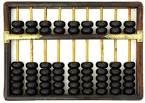COMPUTER SYSTEM SOFT WARE
COMPUTER
SYSTEM SOFTWARE
Computer
software or simply software is a program that enables a computer to perform a
specific task as oppose to the physical components of the system (i.e.
hardware).
TYPES
OF COMPUTER SOFTWARE
It
can be classified majorly into three: system software, programming, and application
software.
SYSTEM
SOFTWARE
System
software helps run the computer hardware and computer system. It enables other
software to run properly by interfacing with hardware and with other software. It
includes operating systems, device drivers, diagnostic tools, server, windows
utilities etc.
PROGRAMMING
SOFTWARE
Programming
software usually provide tools to assist a programmer in writing computer
programs and software using different programming languages in a more
convenient way. The tools include text editors, compilers, interpreters,
linkers, debuggers and so on.
APPLICATION
SOFTWARE
Application
software enables the computer users to perform a task. It allows human to
accomplish one or more specific (non – computer related) tasks. Typically
application software includes industrial automation, business software,
educational software, medical software, databases and computer games.
Businesses are probably the biggest users of application software, but almost
every field of human activity now uses some form of application software.
OPERATION
OF SOFTWARE
Computer
software has to be loaded into the computer’s storage (also known as memory and
RAM) once software loaded; computer is able to execute the software. Computers
operate by executing the computer programs.
This
involves passing instructions from the application software through the system
software to the hardware which ultimately receives the instruction as machine
code. Each instruction causes the computer to carry out an operation moving
data, carrying out a computation or altering the control flow of instruction.
SYSTEM
SOFTWARE
This
is a collection of programs designed to operate, control and extend processing
capabilities of computers.
CLASSES
OF SYSTEM SOFTWARE
1. OPERATING
SYSTEM
An
operating system (OS) is a software program that manages the hardware and
software resource of a computer. A key component of system software, the OS performs
basic tasks, such as controlling and allocating memory, prioritizing the
processing of instructions, controlling input and output devices, facilitating networking
and managing files. Without operating system the computer hardware would be
useless.
Some
of the major facilities provided by a modern operating system are;
(1)
Easy interaction between humans and computers.
(2)
Starting computer automatically when power is turned on.
(3)
Loading and scheduling user’s programs along with necessary compliers.
(4)
Controlling input and output.
(5)
Controlling program execution.
(6)
Scheduling processes.
(7)
Managing and use of main memory.
(8)
Managing and manipulating (e.g. editing) files.
(9)
Providing security of user’s jobs and files.
(10)
Accounting resources usage.
2. TRANSLATORS
Language
translator program are programs for converting programs in other language into
machine language instructions so that the computer can execute them.
3. ASSEMBLER
An
assembler is a computer program for translating assembly language especially, a
mnemonic representation of machine language into object code. The computational
step where an assembler is run is known as ASSEMBLY TUNE.
Assemblers
are far simpler to write than complier for high – level languages, and have
available since the 1950s.
4. COMPILER
A
complier is a computer program (or set of programs) that translates text
written in a computer language into another computer language. The original
sequence is usually called the SOURCE
CODE and the output called OBJECT
CODE.
5. INTERPRETER
An
interpreter is a computer program that executes other programs. This is in
contrast to a complier which does not execute its input program (the source
code) but translates it into another language usually executable machine code
(also called object code) which is output to a file for later execution.
6. LINKER
In
computer science, a linker or link editor is a program that takes one or more
objects generated by compliers and assembles them into a single executable
program.
7. DEBUGGER
A
debugger is a computer program that is used to test and debug other programs.


Comments
Post a Comment